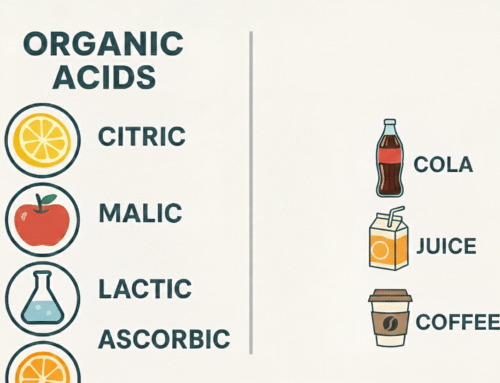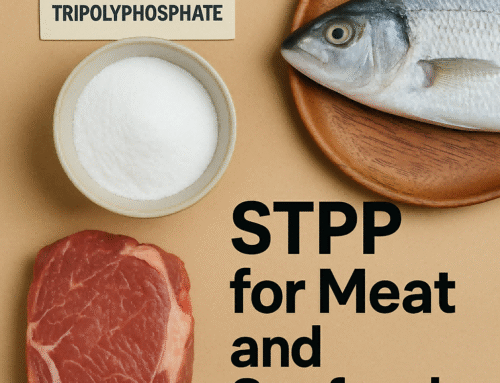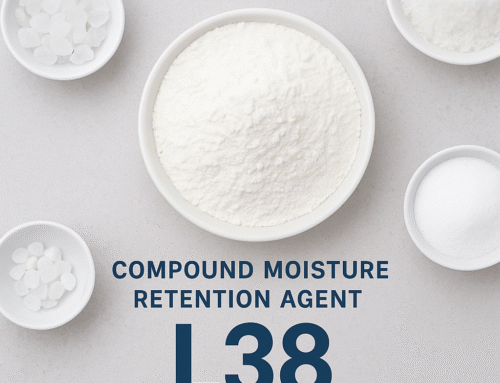Sodium aluminum phosphate, also known as SALP or sodium aluminum phosphate, is a widely used food additive that serves various functions in the food industry. It is a white, odorless, and fine powder composed of sodium, aluminum, and phosphate ions that are combined in specific ratios to create different types of salts.
Here are some specifications of sodium aluminum phosphate:
| Chemical formula | Na3Al(PO4)2 |
| Molar mass | 317.94 g/mol |
| Appearance | White, odorless powder |
| Solubility | Soluble in water and insoluble in ethanol |
| Density | 1.62 g/cm3 |
| pH (1% solution) | 3.5-5.5 |
| HS Code | 28352990 |
| E-Code | E541 |
| Melting point | Decomposes at high temperatures |
| Uses | Leavening agent in baked goods, emulsifying agent in processed cheese products, pH control agent in food and beverages. |
Where does Sodium Aluminum Phosphate come From?
The process of creating sodium aluminum phosphate involves the combination of sodium compounds, aluminum compounds, and phosphate compounds through a specific reaction. The exact details of the reaction and manufacturing process may vary depending on the desired properties and application of the SALP being produced. However, the general steps involved in creating sodium aluminum phosphate include:
Sodium Source: Sodium compounds, such as sodium hydroxide (NaOH) or sodium carbonate (Na2CO3), are commonly used as the sodium source in the production of SALP.
Aluminum Source: Aluminum compounds, such as aluminum sulfate (Al2(SO4)3) or aluminum hydroxide (Al(OH)3), serve as the aluminum source.
Phosphate Source: Phosphate compounds, such as phosphoric acid (H3PO4) or sodium phosphate (Na3PO4), are used as the phosphate source.
Reaction: The sodium source, aluminum source, and phosphate source are combined in a controlled reaction. The specific reaction conditions, stoichiometry, and temperature may vary depending on the desired properties and characteristics of the SALP being produced.
The reaction typically involves the exchange of ions between the sodium, aluminum, and phosphate compounds, resulting in the formation of sodium aluminum phosphate.
Purification and Drying: After the reaction, the resulting sodium aluminum phosphate is typically purified to remove any impurities or byproducts. Purification techniques, such as filtration or recrystallization, may be employed. The purified SALP is then dried to obtain the final desired form, such as a powder or granules.
Specific Usage
In Food Industry
 The leavening agent in the bakery: Leavening agents are ingredients that help dough or batter rise, making it lighter and more porous. Sodium aluminum phosphate reacts with acidic components such as cream of tartar or lemon juice to produce carbon dioxide gas, which causes the dough or batter to expand. This creates air pockets throughout the baked good, giving it a light and fluffy texture. Baked goods such as cakes, cookies, and breads often contain SALP as a leavening agent.
The leavening agent in the bakery: Leavening agents are ingredients that help dough or batter rise, making it lighter and more porous. Sodium aluminum phosphate reacts with acidic components such as cream of tartar or lemon juice to produce carbon dioxide gas, which causes the dough or batter to expand. This creates air pockets throughout the baked good, giving it a light and fluffy texture. Baked goods such as cakes, cookies, and breads often contain SALP as a leavening agent.
Emulsifying agent in processed cheese products: Emulsifiers are substances that prevent the separation of liquids in a mixture, allowing them to remain evenly dispersed. In processed cheese, sodium aluminum phosphate helps to stabilize the mixture and prevent the cheese from separating from other ingredients. It also improves the texture and consistency of the cheese product.
pH regulator: pH describes the level of acidity or alkalinity in a solution, and it can affect the taste, texture, and shelf-life of food products. Sodium aluminum phosphate can be added to food and beverage products to adjust their pH levels, helping to maintain the desired acidity or alkalinity. For example, sodium aluminum phosphate may be added to soft drinks or fruit juices to adjust their pH levels, preventing spoilage and maintaining flavor.
In Other Field
In addition to its use in the food industry, sodium aluminum phosphate also has industrial applications.
Flux for Ceramics: It is used in ceramic manufacturing as a flux, which helps to reduce the melting point of ceramic materials, enabling them to be molded and shaped more easily. Sodium aluminum phosphate is also used in fire retardants and in the production of phosphate fertilizers.
Clarifying Agent: Sodium aluminum phosphate can also be used in the manufacture of glass, where it acts as a clarifying agent. It helps to remove impurities from the glass and improve its clarity and color.
Toothpaste ingredients: In addition, sodium aluminum phosphate is sometimes used as an ingredient in toothpaste and oral hygiene products. It can help to control the pH of these products and prevent bacterial growth.
Is Sodium Aluminum Phosphate Vegan?
Sodium aluminum phosphate is a chemical compound used as a food additive in various processed foods, particularly as a leavening agent and acidity regulator. It is not directly derived from animal sources It is derived from sodium, aluminum, and phosphate compounds, typically through a manufacturing process. So yes, it is vegan.
Is Sodium Aluminum Phosphate Safe?
The use of SALP as a food additive is regulated by government agencies such as the U.S. Food and Drug Administration (FDA) to ensure that it meets safety standards. The FDA has designated SALP as Generally Recognized As Safe (GRAS) for use in food and beverages. However, excessive consumption of SALP may lead to gastrointestinal discomforts such as bloating, gas, or diarrhea.
In summary, sodium aluminum phosphate plays an indispensable role in the food industry. If you are an importer looking for a reliable supplier of disodium pyrophosphate, be sure to choose a reputable company with a proven track record of quality and reliability. Contact Us [email protected]




